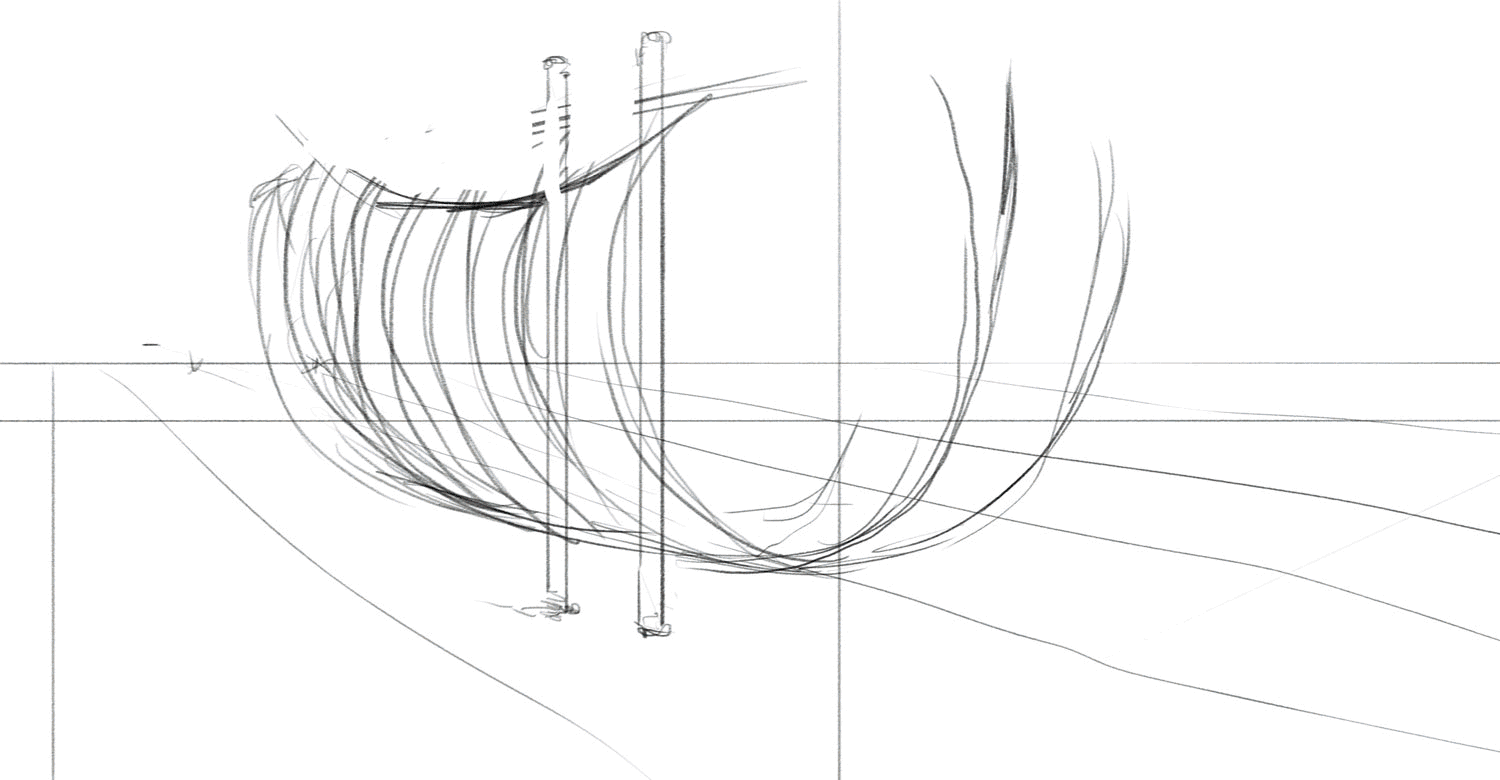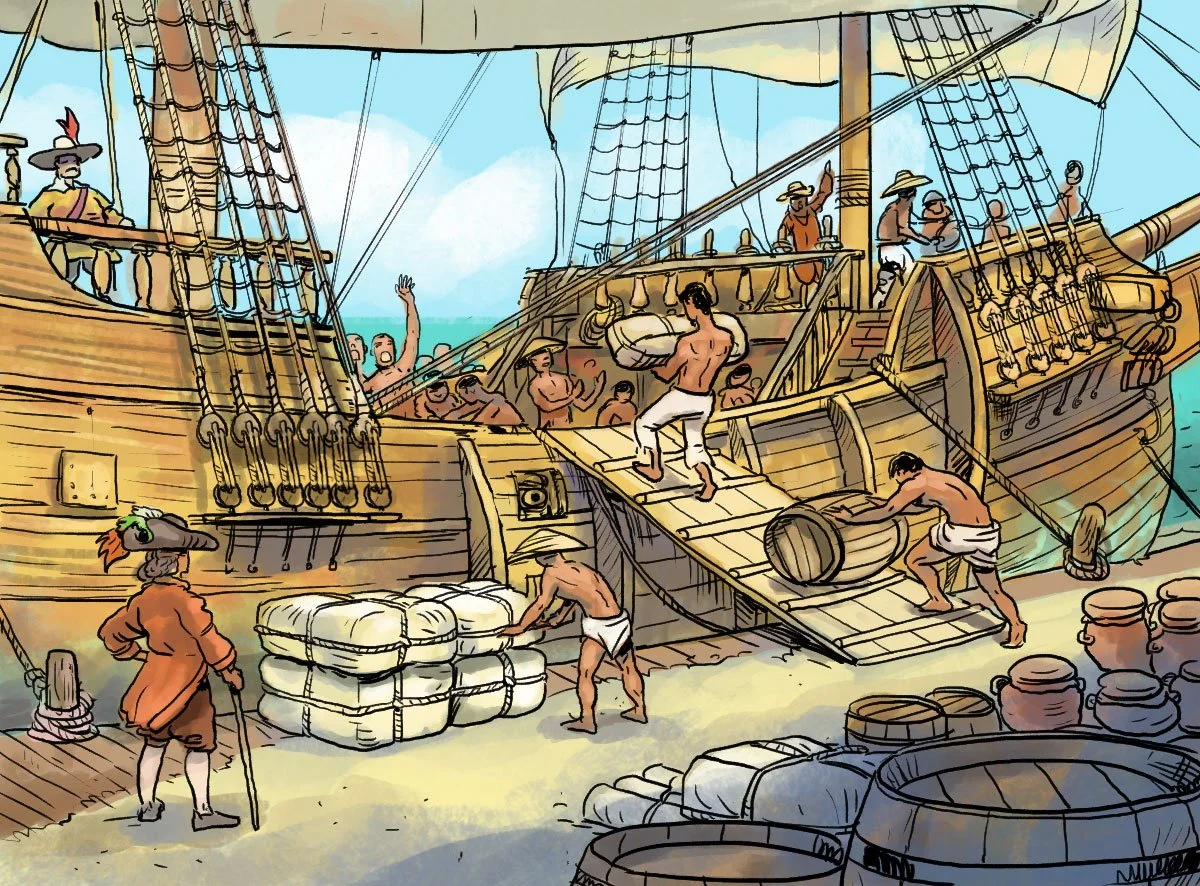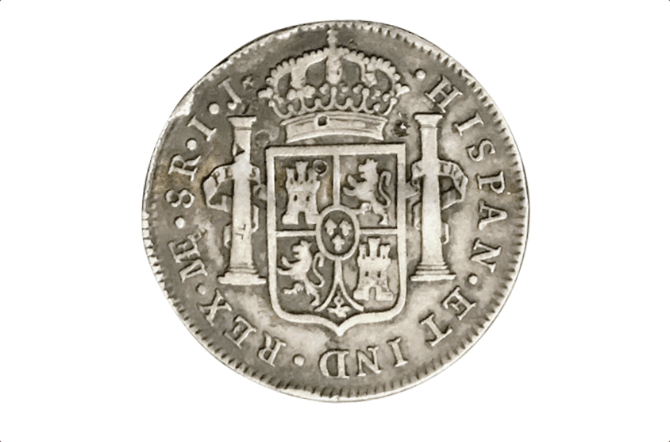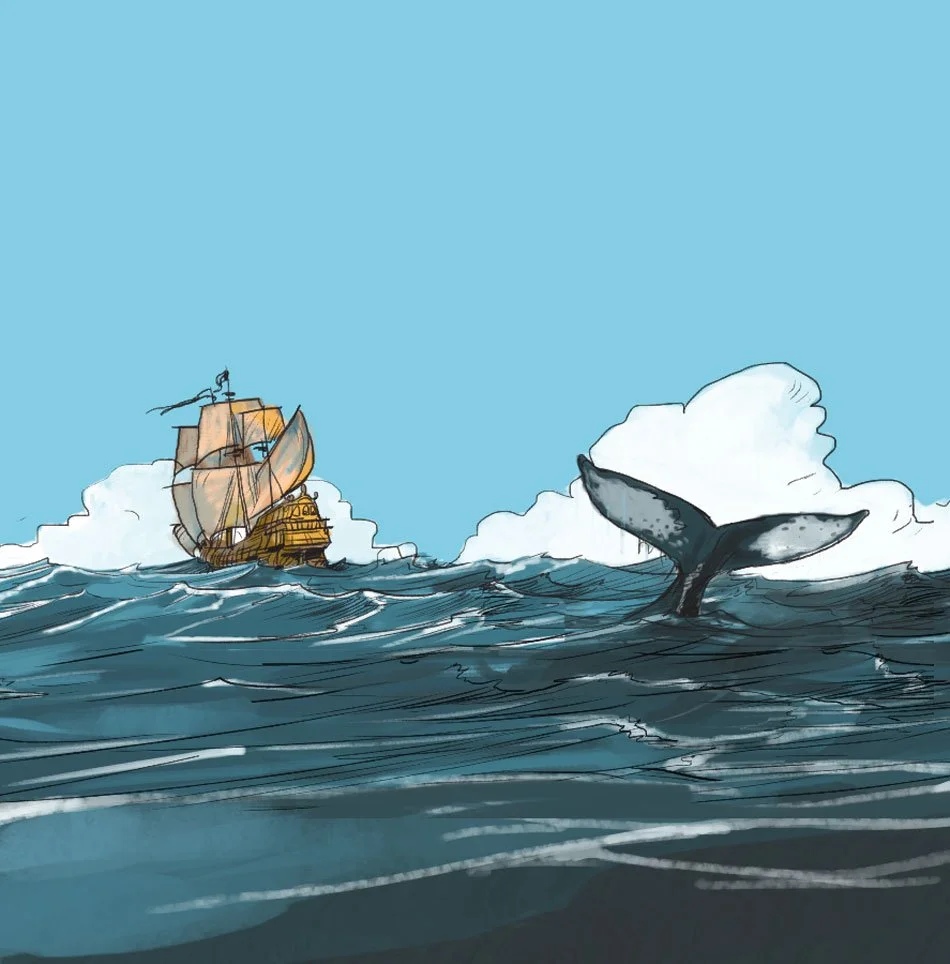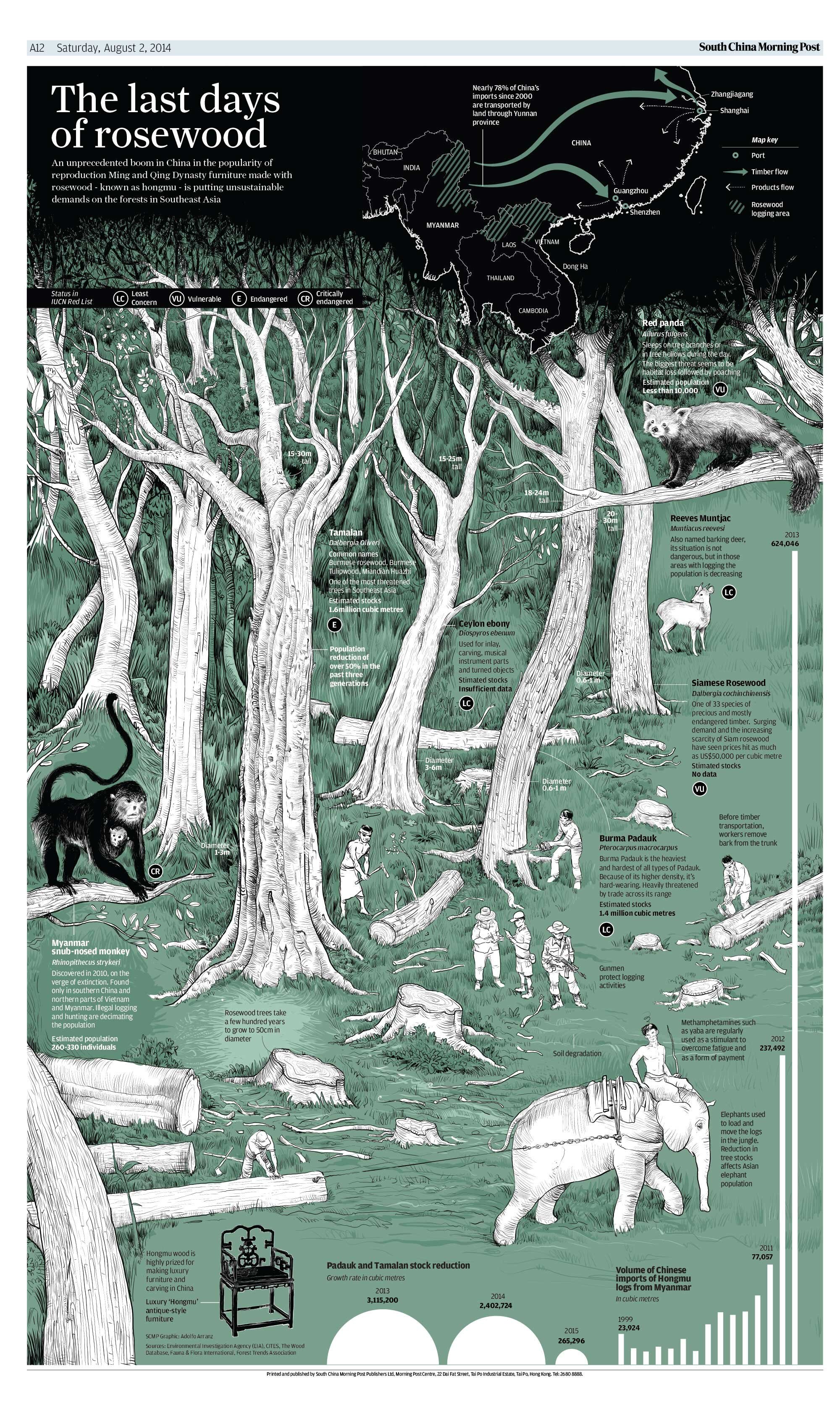The beginning of globalisation
The China ship
This is one of those projects that demands considerable effort, both in research and execution. I found the subject of the Manila galleon and its voyages across the Pacific, trading with Asia, particularly China, incredibly fascinating.
Print version published in February 2018.
Globalisation is thought to have its beginnings in the 16th century when the Spanish silver dollar went transcontinental. Its acceptance as common currency arose when Spanish navigators in the Philippines established a circular shipping route, known as the tornaviaje, between Asia and the Americas. More than 250 years of uninterrupted trade ensued between Asia and the rest of the world. And the ships playing this route were known as China Ships.
Online version chapters published in May 2018.
This project has two versions: a spread-page print version and a four-chapter online version.
The discovery of the roundtrip and the beginning of globalisation
Following the completion of the print project, we embarked on an ambitious digital expansion to explore the profound impact of trade between the Americas and Asia in greater detail.
For the digital narrative, I had the privilege of working closely with Marco Hernández. (See above the author’s portrait of the online project.) Over three months, we produced four comprehensive chapters:
The Discovery
The first chapter details Spanish navigator Andrés de Urdaneta's monumental discovery of the "tornaviaje"—the reliable return route across the Pacific Ocean.
Some of the visuals donde for this chapter
Galleon of China: flagship of trade over two centuries
The second chapter is a deep dive into the technical details and construction of the vessel itself, known as the Manila Galleon or "The China Ship."
All chapters are full illustrated.
Process step-by-step of this illustration showing the Cavite’s shipyard.
A journey of dread
To truly immerse the audience in the experience, we translated the first-hand account of Italian traveller Gemelli Careri into a gripping sequential art story.
With over 80 original illustrations, we depicted his gruelling, nearly eight-month voyage aboard a Manila Galleon. (And yes, my hand was aching for days after drawing the final panel!).
Some examples of the many illustrations that make up this story.
How silver changed the world
The final chapter reveals the project's most surprising legacy: how silver from Spanish America fueled the global economy. We traced the journey of the Spanish real de a ocho (piece of eight), showing how it became the world's first truly global currency and laid the groundwork for the US dollar, Mexican peso, Australian dollar, and even the Hong Kong dollar.
Opening illustration for the fourth chapter. Brian Wang, an illustrator and designer at the South China Morning Post, posed for this illustration.
Did you know the origin of the US dollar's ‘$ comes from the Spanish shield?’
Potosí mountain. One of the primary sources of silver.
Rough sketch print page.
Result spread print page.
All the illustrations and graphics shown on this page are under the copyright of the South China Morning Post.
Thanks for the visit!
Graphic with Reuters
The Godfather at 50
Ghent Altarpiece
Raining cats and dogs
City of Anarchy
Penned in: the state of Hong Kong’s opposition
Sixteen years of Angela
Safe skies
Cashing in on gold
How Bruce Lee and street fighting in Hong Kong helped create MMA
The China Ship
On the move
Must farm
Arrested development
Tradition or exploitation?
The story of a newspaper
Where coal is king
China's wildlife market
How the coronavirus spread in Hong Kong
A question of taste
Creating a modern monster
They are very close ...
The last days of rosewood








